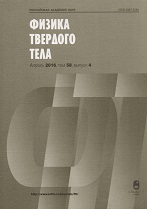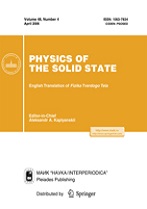|
This article is cited in 16 scientific papers (total in 16 papers)
Phase transitions
Shape effect in layering of solid solutions in small volume: bismuth–antimony alloy
V. B. Fedoseev, A. V. Shishulin
G. A. Razuvaev Institute of Organometallic Chemistry, Russian Academy of Sciences, Nizhnii Novgorod
Abstract:
The regularities of the effect of the shape of interphase boundaries in small volume systems on the separation of solutions with an upper critical solution temperature (UCST) are described by the example of Bi–Sb alloy particles with a core–shell configuration. The change in the shape of interphase boundaries is simulated in general by introducing a parameter corresponding to the degree of deviation of the shape of the boundaries from the spherical one. An analysis of the extrema of the Gibbs function revealed regularities in the effect of the shape of the core and shell phases on phase equilibria, the thermodynamic stability of heterogeneous states, and the phase separation diagram. The deviation of the shape of the interphase boundaries from the spherical shape changes the UCST and the mutual solubility of the components. The deformation of the shell of a core–shell particle increases the thermodynamic stability of the heterogeneous state, which contributes to the separation of the solution. The deformation of the core lowers the thermodynamic stability of the heterogeneous state and expands the range of metastable states.
Received: 22.01.2018
Citation:
V. B. Fedoseev, A. V. Shishulin, “Shape effect in layering of solid solutions in small volume: bismuth–antimony alloy”, Fizika Tverdogo Tela, 60:7 (2018), 1382–1388; Phys. Solid State, 60:7 (2018), 1398–1404
Linking options:
https://www.mathnet.ru/eng/ftt9140 https://www.mathnet.ru/eng/ftt/v60/i7/p1382
|


| Statistics & downloads: |
| Abstract page: | 64 | | Full-text PDF : | 12 |
|





 Contact us:
Contact us: Terms of Use
Terms of Use
 Registration to the website
Registration to the website Logotypes
Logotypes









 Citation in format
Citation in format 
